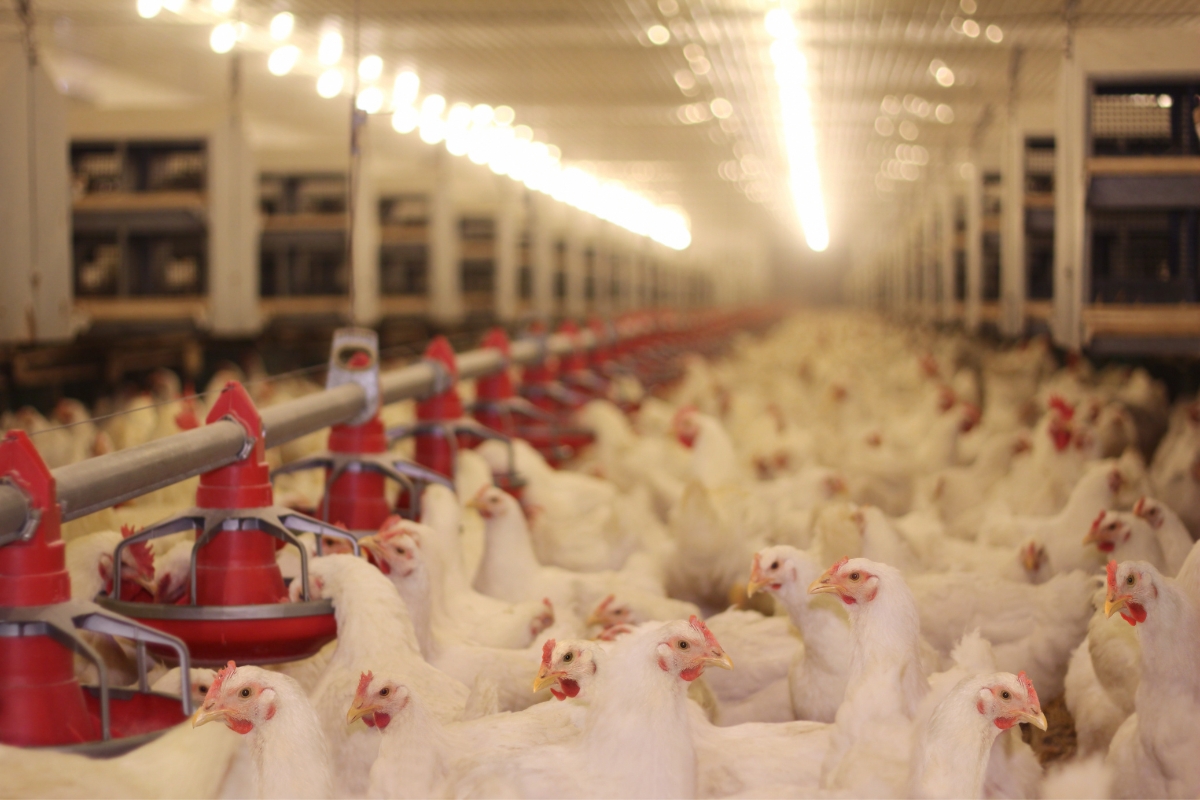Antibiofilm activity of a lytic Salmonella phage – broiler farms
Bacteriophages are widely used in the veterinary field to treat infections caused by planktonic bacterial cells. However, their potential as an agent against biofilms has not been fully explored.
To gain a better understanding of how bacteriophages could be used against biofilms, a Salmonella-infecting Siphoviridae page was screened for its host range against 15 different Salmonella enterica isolates from commercial chicken farms.
The isolates were then subjected to microplate assays to measure their biofilm activity and PCR assays for the adrA, csgD, and gcpA genes. Of all the samples tested, phage efficacy was particularly impressive against established biofilms formed by seven S. enterica isolates (S. Gallinarum, S. Enteritidis, S. Montevideo, S. Uno, S. Oritamerin, S. Belgdam, and S. Agona).
Consequently, these results may pave the way for new strategies in antimicrobial therapy with bacteriophages against antibiotic-resistant bacteria associated with biofilms.
The authors Reham A Hosny, Azhar G Shalaby, Soad A Nasef, and Hend K Sorour published their article ‘Antibiofilm activity of a lytic Salmonella phage on different Salmonella enterica serovars isolated from broiler farms‘, on 5 November 2022.
Key topics include:
- A previously isolated Salmonella-infecting Siphoviridae page was screened for its host range against 15 Salmonella enterica isolates.
- All S. enterica isolates were screened for biofilm activity using a microtiter plate assay and for the adrA, csgD, and gcpA genes using conventional PCR.
- The efficacy of phages against established biofilms produced by the selected seven S. enterica isolates was evaluated using a microtiter plate assay and real-time reverse transcriptase PCR over various incubation times of 5 and 24 hours.
- The phages effectively reduced the biofilm activity of the established S. enterica biofilms in the microtiter plate assay (P < 0.050).
- In addition, the relative expression levels of csgD, gcpA, and adrA genes were significantly upregulated to varying degrees in the biofilm cells of the S. enterica isolate after phage treatment (P < 0..050).

Abstract
Bacteriophages have been mainly used in treating infections caused by planktonic bacterial cells in the veterinary sector. However, their applications as antibiofilm agents have received little attention.
Accordingly, a previously isolated Salmonella infecting Siphoviridae phage was investigated for host range against 15 Salmonella enterica isolates (S. Cape, S. Gallinarum, 4 S. Enteritidis, 3 S. Montevideo, S. Uno, S. Oritamerin, S. Belgdam, S. Agona, S. Daula, and S. Aba) recovered from the litters of commercial broiler farms.
All S. enterica isolates were examined for their biofilm activity using a microtiter plate assay and for adrA, csgD, and gcpA genes using conventional PCR.
The phage efficacy against established biofilms produced by the selected seven S. enterica isolates (S. Gallinarum, S. Enteritidis, S. Montevideo, S. Uno, S. Oritamerin, S. Belgdam, and S. Agona) was assessed using microtiter plate assay and reverse transcriptase real-time PCR over different incubation times of 5 and 24 h. All S. enterica isolates were strong biofilm formers. Moreover, the phage effectively reduced the biofilm activity of the established S. enterica biofilms in the microtiter plate assay using the independent sample t-test (P < 0.050).
Furthermore, the relative expression levels of csgD, gcpA, and adrA genes in the biofilm cells of S. enterica isolate after phage treatment were significantly up-regulated to variable degrees using the independent sample t-test (P < 0.050).
In conclusion, the present study revealed the potential use of Salmonella phage in reducing established biofilms produced by S. enterica serovars isolated from broiler farms.
Copyright: the authors

 Isolation and identification of the broad-spectrum high-efficiency phage vB_SalP_LDW16 and its therapeutic application in chickens
Isolation and identification of the broad-spectrum high-efficiency phage vB_SalP_LDW16 and its therapeutic application in chickens
